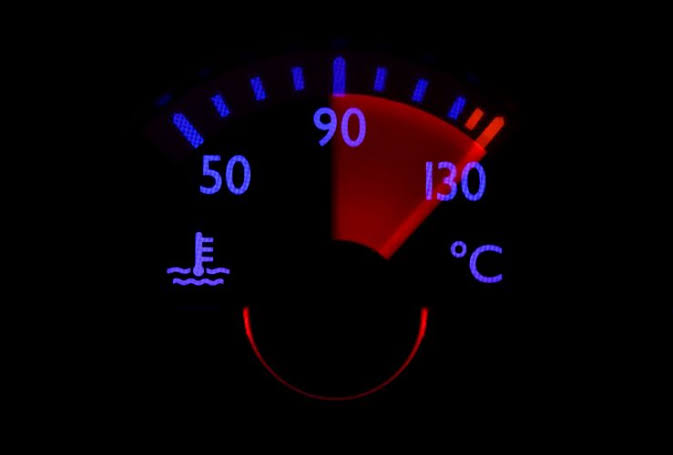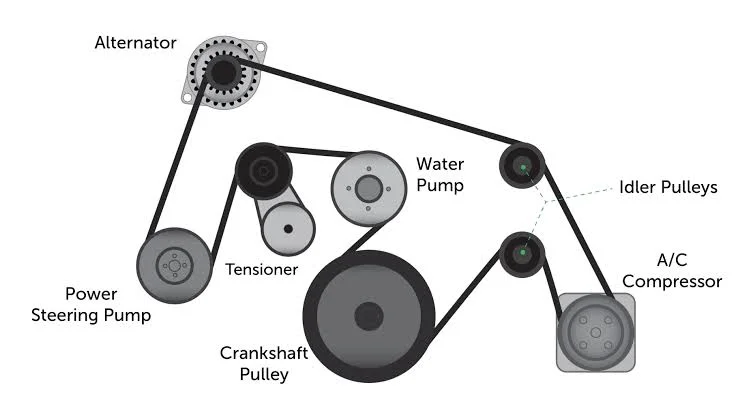Every mechanic knows this truth: 90% of AC related overheating calls spike during summer months when temperatures soar above 85°F. There's a hidden engineering reality that most drivers never consider.
Your air conditioning system doesn't operate in isolation. It's connected to your engine through a mechanical relationship that can turn a simple cooling request into a thermal nightmare under the hood.
The Real Cause
Here's what actually happens when you flip that AC switch. Your compressor immediately demands 3-8 horsepower from your engine, that's like adding another lawn mower to your engine's workload! This extra burden generates additional heat that your cooling system must manage.
Most drivers assume their engine runs the same temperature regardless. Wrong ‼️. The AC compressor cycles on and off, creating intermittent spikes in engine load that stress your cooling system beyond its normal capacity.
"My car always gets me home fine," drivers tell me, ignoring the temperature gauge creeping toward the red zone. This overconfidence leads to expensive repairs.
Why Your Cooling System Can't Keep Up
The problem multiplies when multiple systems compete for the same airflow. Your radiator and AC condenser sit right next to each other, both fighting for the same cooling air passing through your grille.
When debris blocks these fins even slightly, your cooling efficiency drops dramatically. I've seen radiators that look clean from the outside but are completely clogged between the condenser and radiator core.
Low coolant levels make this worse. Even a 10% reduction in coolant can push your engine into the danger zone when that AC compressor kicks in. Your cooling system operates on tight tolerances, and any deficiency gets magnified under load.
The Five Critical Systems That Fail First
- Radiator fans represent the weakest link. When temperatures climb and your AC demands maximum cooling, these fans must work overtime. A failing fan motor that runs at 80% capacity might handle normal driving but fails when AC load hits.
- Water pump efficiency drops with age. Internal corrosion and wear reduce circulation exactly when you need it most. The temperature difference between your upper and lower radiator hoses should never exceed 15°F, anything more signals circulation problems.
- Serpentine belt tension affects everything. A belt that's stretched even 10% can allow your water pump to slip under load. "It looks fine to me," drivers say, but belt deflection tells the real story.
- Thermostat failure creates localized hot spots. A thermostat stuck partially closed might maintain normal temperatures without AC but can't handle the extra heat when cooling demands increase.
- Coolant passage restrictions accumulate over time. Internal corrosion and scale buildup reduce flow in areas you can't see. Your system might work fine until that extra AC load pushes temperatures beyond its reduced capacity.
Real Solutions That Actually Work
- Stop treating symptoms and fix the root cause. Check your coolant level when the engine is completely cold, never remove the cap from a hot system! Top off with the correct coolant mixture, not straight water or wrong coolant types.
- Clean your radiator and condenser properly. Remove the plastic shroud and use compressed air from the engine side, blowing outward. Most DIY attempts blow debris deeper into the fins.
- Test your cooling fans with a simple procedure. Start your engine, let it reach operating temperature, then turn on your AC. Both fans should spin within 30 seconds. No spinning means immediate diagnosis is needed.
- Replace your serpentine belt based on condition, not mileage. Press the middle of the longest belt span, more than half inch deflection indicates replacement time. Don't wait for obvious cracking or fraying.
Prevention Beats Expensive Repairs
Schedule cooling system maintenance before summer heat arrives. A basic pressure test reveals small leaks before they become major problems. Coolant replacement every 3-5 years prevents internal corrosion that restricts flow.
Use your AC wisely during extreme heat. Roll down windows briefly to purge hot air before engaging the compressor. This reduces the initial load on your cooling system.
"I'll run it until it breaks," some drivers tell me. This approach turns a $200 preventive service into a $2,000 engine rebuild when overheating causes internal damage.
Monitor your temperature gauge actively when running AC in hot weather. Any movement toward the red zone means immediate attention is required, pull over and turn off the AC before permanent damage occurs.
Your car's cooling system operates within specific parameters. Understanding these limits and maintaining the components properly keeps you comfortable without the shocking expense of overheating damage.


Comments (0)
Please login to join the discussion
Be the first to comment on this article!
Share your thoughts and start the discussion